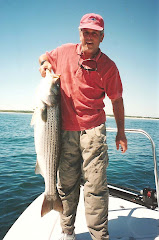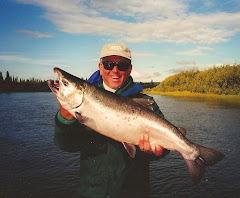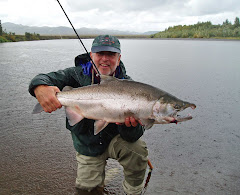The show season will soon begin to wind down and the official beginning of spring is but a month away. And then April will bring with it the first signs of striped bass being caught off the jersey Shore, J-Bay, Island’s west end, Little Neck Bay and many of the shallow back-water areas that awaken to the Spring’s warming sun. Increasing bass activity will also take place in many of the more predominant fresh water rivers around the tri-state area: Delaware River, Hudson River, Connecticut, Thames and Housatonic Rivers. So, it’s never too early to prepare for the seasonal renaissance and return of stripers.
Most of the bass that visit Long Island waters originate from either the Chesapeake River or Hudson River stocks. Stripers are classified as anadromous, meaning they live predominantly in saltwater but return from the salt to their natal freshwater rivers to spawn. Once the spawning mandate is satisfied the bass move out of those rivers and begin to move back to saltwater. They will infiltrate the inland waters and move up the Northeast coast. Starting in about mid-April bass will begin to be caught in the western most parts of Long Island and as the season progresses gradually flood into all areas around Long Island. Many will take up residence in the waters surrounding Long Island, including numerous bays and harbors, while many bass will continue their journey right up the entire length of the coast. During the fall migration huge masses of both bait and pursuing striped bass will move south to their wintering areas. When this movement occurs it seems as if every bass in the world passes through the toll gates at the east end of the Island, most notably Montauk at the tip end of the South Shore and Orient Point and the Race off the Island’s North Fork. Striped bass are essentially an inshore fish and as such provide numerous angling opportunities for near shore fly and light tackle anglers. Stripers show a marked preference for boulders, rocks…as one of its nicknames, “rockfish” implies… jetties, pilings, docks, piers, riprap and other forms of visible or submerged structure. They can also be caught in open water as well as on sand and gravel flats in literally inches of water. It may come as a surprise to some but sizable flats exist on Long Island and a growing number of fly fishermen and light tackle anglers are pursuing them in that venue. It is a sight fishing phenomenon comparable in many respects to tropical bone fishing and casting to tailing redfish in Florida.
Welcome
Thank you for visiting Angling Explorations, a blog dedicated to the pursuit of fly fishing and light tackle angling. This space will present timely and current information to all who enjoy spending their precious free time on the water casting flies, lures or plugs to our world's most magnificent gamefish.Together, we will explore some of the finest angling destinations in the United States and abroad, especially those offering the highest quality and moderately priced angling adventures. I will share with you my insights and personal experiences that will, hopefully, enable you to make informed decsions about your own destination planning and light tackle angling.Any topic about fly-fishing or light tackle angling worthy of discussion shall find a place in these pages. I will do my best to present the most relevant and contemporary information relating to tackle, techniques, flies, lures, book, videos, fishing locations, guides, captains, lodges...the list goes on. And I may also present and discuss topics such as books, art work, writing photography, videos and anything else that might add value to the sport fishing experience.I have fished extensively throughout all of the northeast, mid-Atlantic and southeast regions of the United States as well as much of the Gulf Coast region, and portions of the American West. I've fished abroad and traveled almost annually for about twenty years now to the great state of Alaska with fly rod in hand, chasing all five species of Pacific salmon as well as other indigenous fish. And I've been most fortunate to meet and know some of the finest captains, guides and fly tyers on our planet, as well as some of the finest fishing lodge operations and outfitters in the busines. But beyond all that, I still enjoy catching bluegill. The day I don't, I'll take up a new sport!So please visit this blog often as well as its sister sites: angelopeluso.com and apflyfishingjournal.blogspot.comI look forward to our time together.Thank you. AP
Blog Archive
About Me
- AP
- Following a long and fulfilling corporate career I moved on to pursue other interests as a full time outdoor journalist, book author, photographer and lecturer. I am also a strategic managment consultant involved in the outdoors, recreation and leisure time industries. Fly fishing is my favorite pastime but I enjoy all forms of fishing and traditional outdoor activities. When I am not writing you will most often find me exploring my home waters of the Long Island Sound. I am equally as comfortable on a tidal creek in the wilderness of the Alaska Peninsula, or on a Gulf Coast flat or in the waters of a free flowing river. I love to wade, fish from a boat and kayak. If I couldn't fish, my life would not be complete. And should the day ever come when I no longer enjoy catching diminutive bluegill, I will part with all my gear and take up a new sport. Professional Affiliations: Outdoor Writers Association of America; New York State Outdoor Writers Association; Professional Outdoor Media Association; Association of Great Lakes Outdoor Writers. For further information please refer to my website at www.angelopeluso.com

















